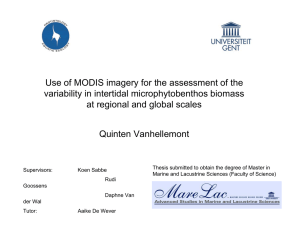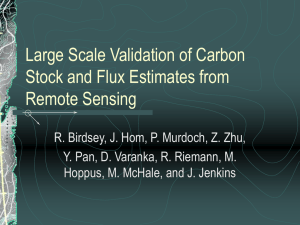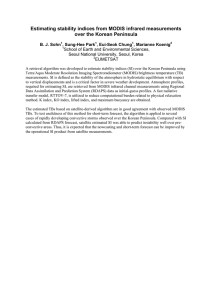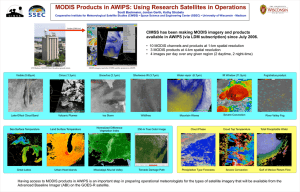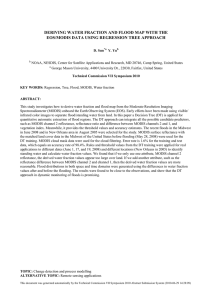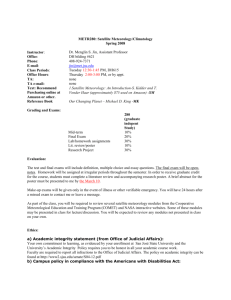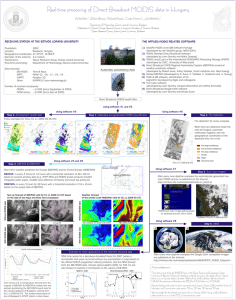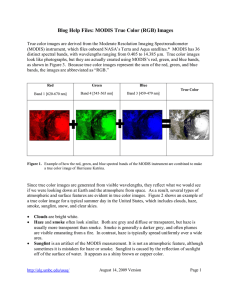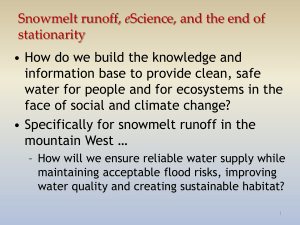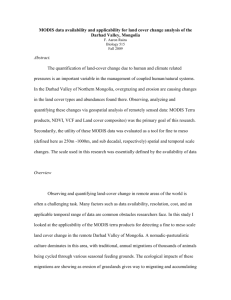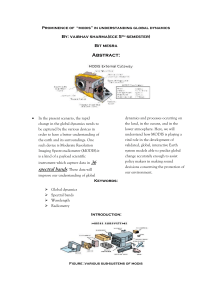Daniel Siegel
advertisement
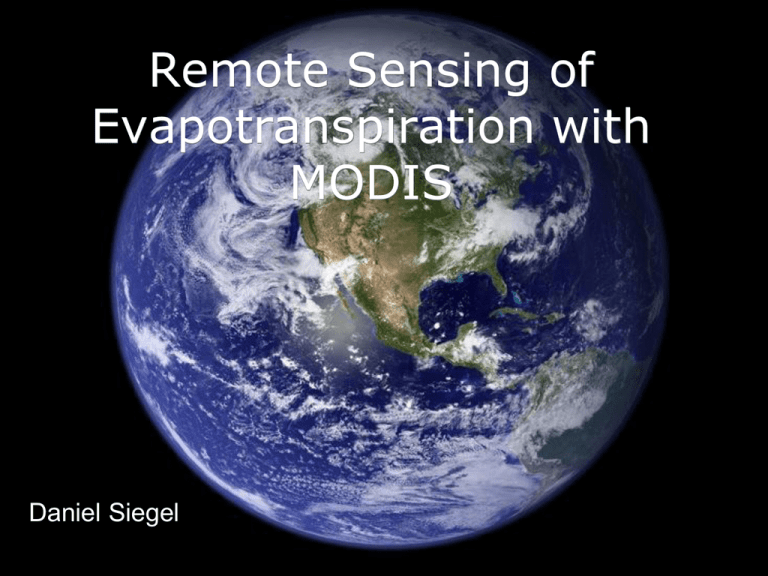
Remote Sensing of Evapotranspiration with MODIS Daniel Siegel What is MODIS? Moderate-Resolution Imaging Spectroradiometer Launched in 1999 aboard the EOS AM (Terra); EOS PM (Aqua) followed in 2002 Monitors 36 spectral bands between 0.4 m and 14.4 m Images entire Earth every 1-2 days at 1 km resolution Why use MODIS? ASTER and Landsat have 60 m resolution but available once a month at best Geostationary satellites capture data with 15 min frequency but 5 km resolution Relevent MODIS Products MOD11 - Surface temperature and emissivity MOD43 - Albedo MOD15 - Leaf Area Index (LAI) MOD13 - NDVI Mod07 - Atmospheric stability; temperature and vapor pressure at 20 vertical levels MOD03 - Lattitude, longitude, ground elevation, solar zenith angle, satellite zenith angle and azimuth angle NDVI First measured by the original Landsat in 1972 Measurement of a pixel’s “greenness” RIR Rred NDVI RIR Rred Accessing MODIS Data Level 1 and Atmosphere Archive and Distribution System (LAADS) Warehouse Inventory Search Tool (WIST) submits orders via EOS ClearingHouse (ECHO) HDF can interface with C, Fortran, Perl, MATLAB, IDL or Mathmatica WIST Surface Energy Balance System (Su 2002) RnGo E RnRd + Ld - s Go Rd + Ld - s Go = Rn[c + (1-fc)(s - c)] s c = Measured by MODIS = Variables fc = percentage of ground covered by vegetation Calculating H = cannot be measured remotely z0m and z0h Can vary by several orders of magnitude Using LAI and wind speed, z0m can be calculated as a function of canopy height following Massman (1997) Zoh = zom/exp(kB-1) Wind speed Limiting Cases Hdry = Rn - Go Constraining the result between these values decreases the uncertainty considerably Summary: Local Variables Rd - Measured with a radiation sensor Ld - Stephen-Boltzman equation using air temp Wind speed and canopy height must be measured on site Results Triangle Method (Jiang and Islam 2001) E (Rn G) min 0 max f ( NDVI, soil moisture) des f (Ta ) dT T Ta Results Triangle Method Original Priestly-Taylor Eq Complementary Model From Priestly-Taylor 2007) ET + ETpot = 2Etwet (Venturini & Islam (Bouchet 1963) From Penman Uses temp profile as surrogate for humidity deficit EF = ET / (Rn-G) Benefits of Isolating EF Rn is a large source of error because of atmospheric interference and cloud cover Generally constant during daytime Useful for mapping drought conditions Results Future Research Removing cloud-contaminaed pixels biases results, ignores diffuse radiation Nocturnal transpiration 3°K error in in Ts causes 75% error in H
